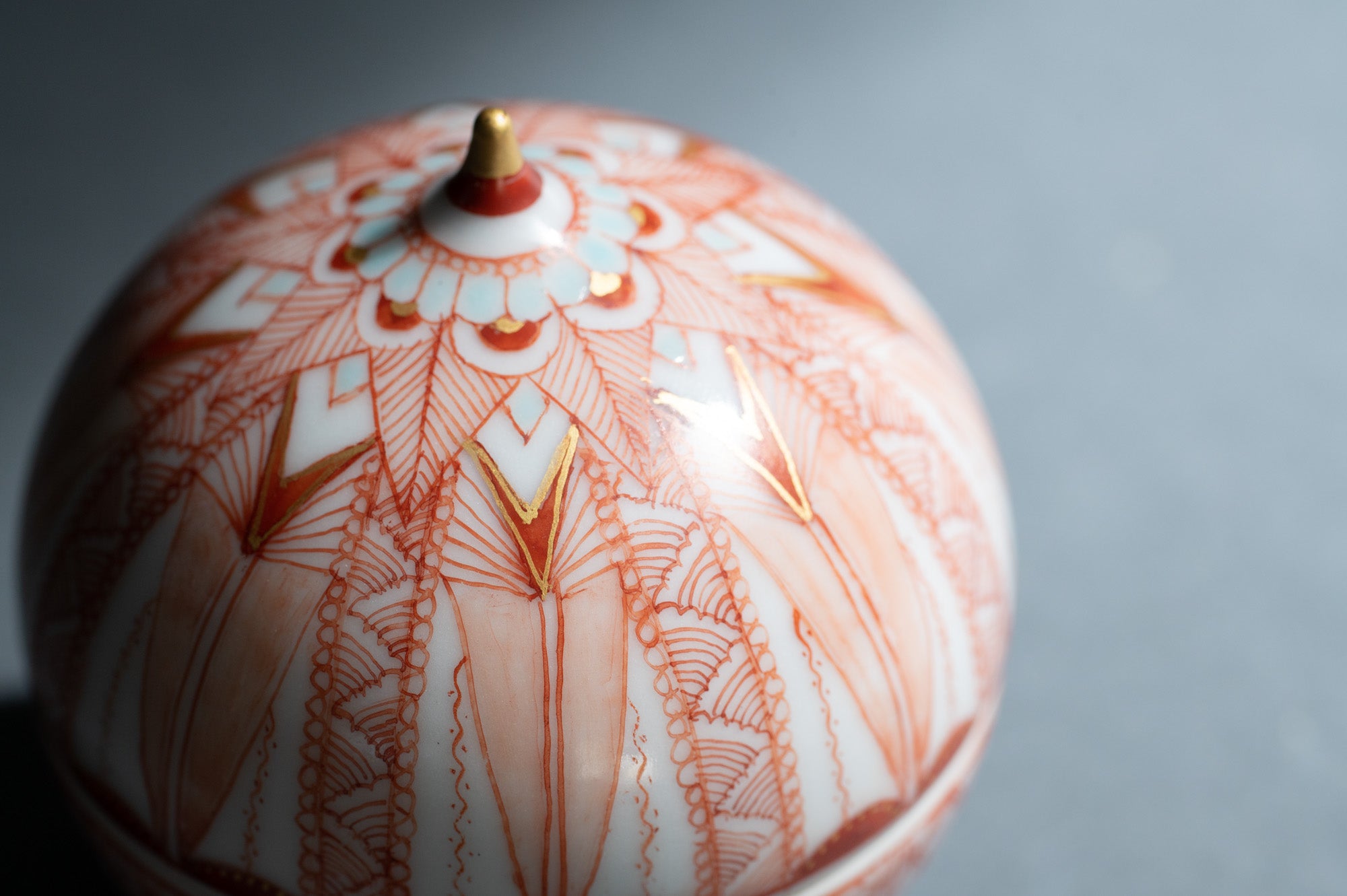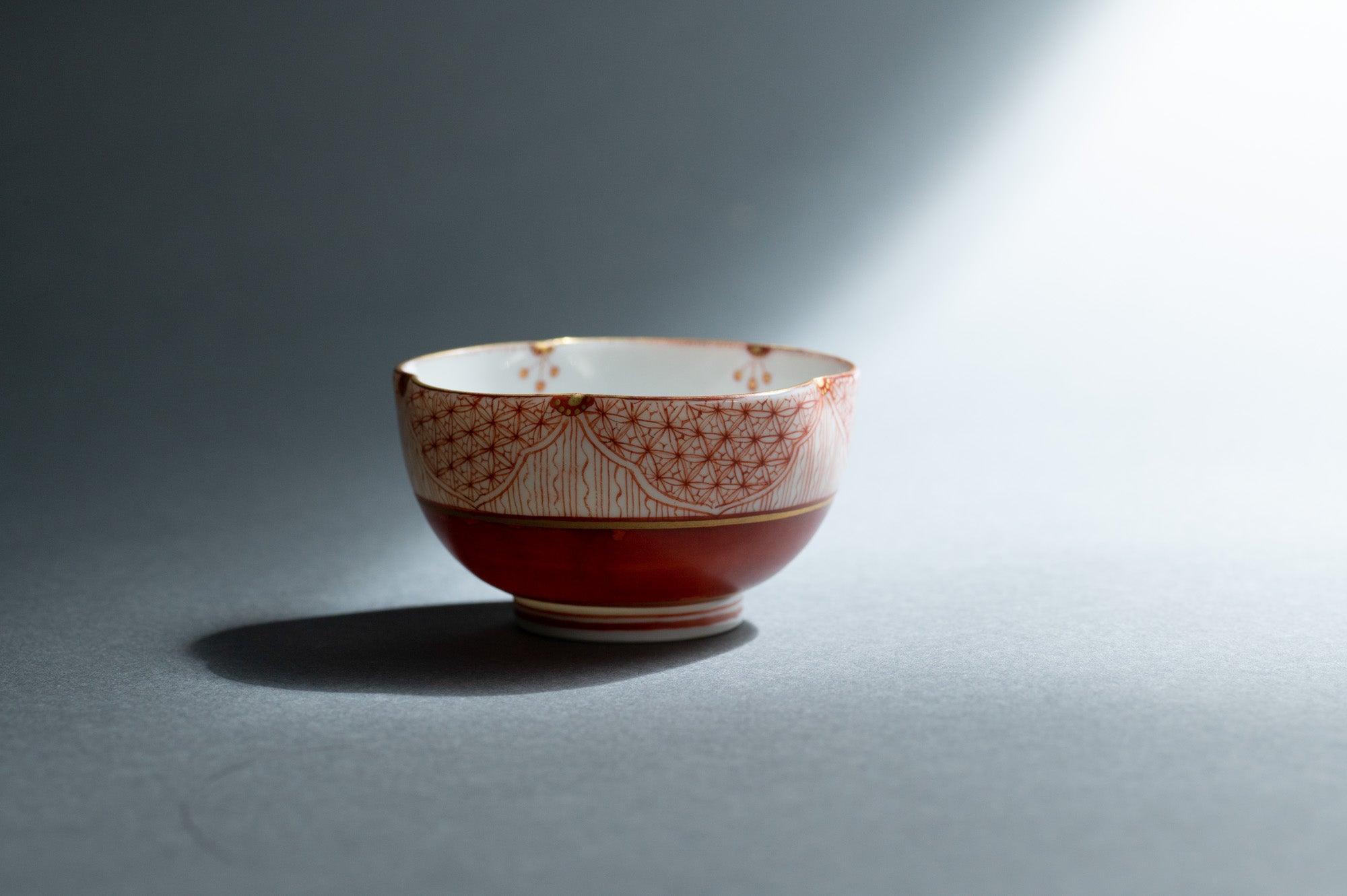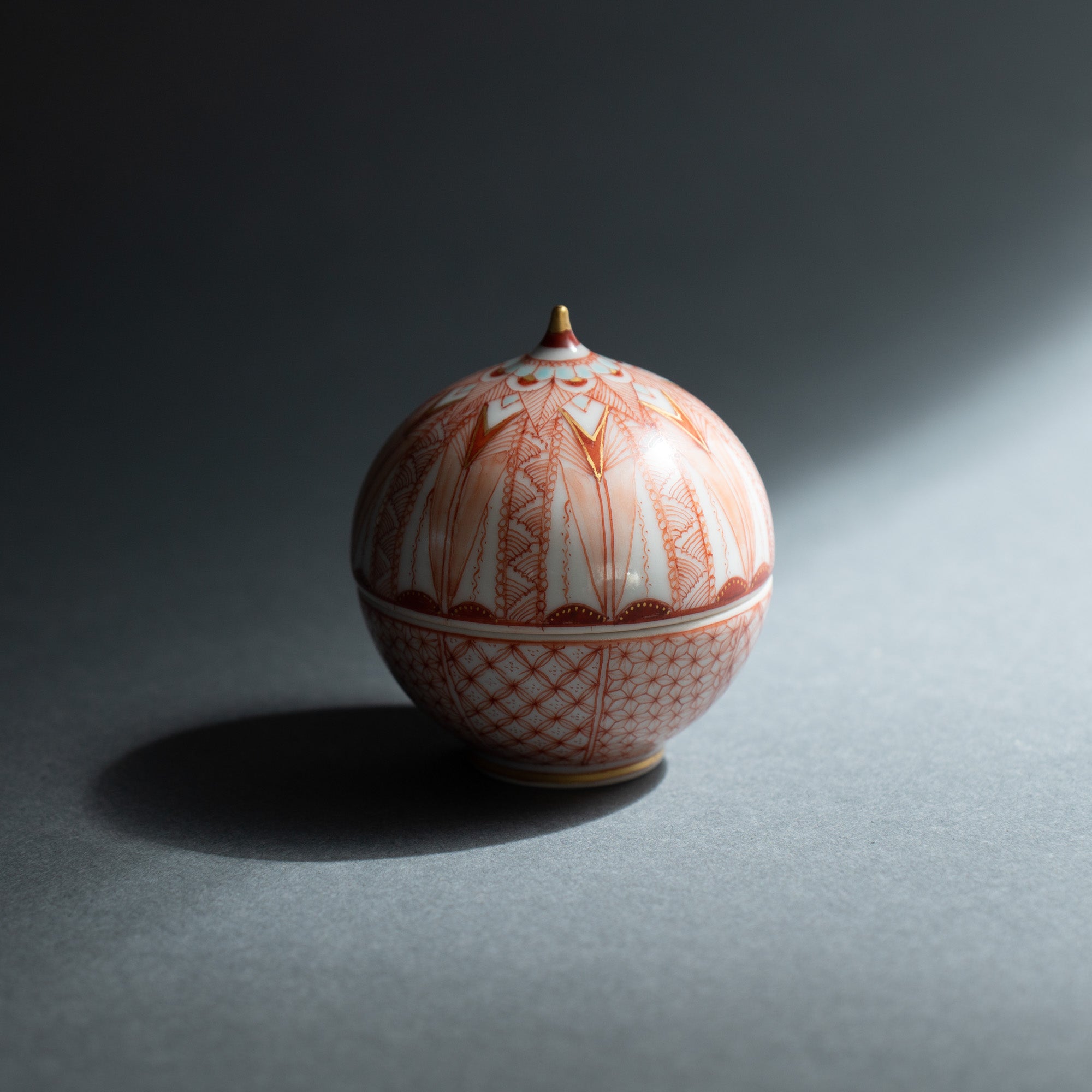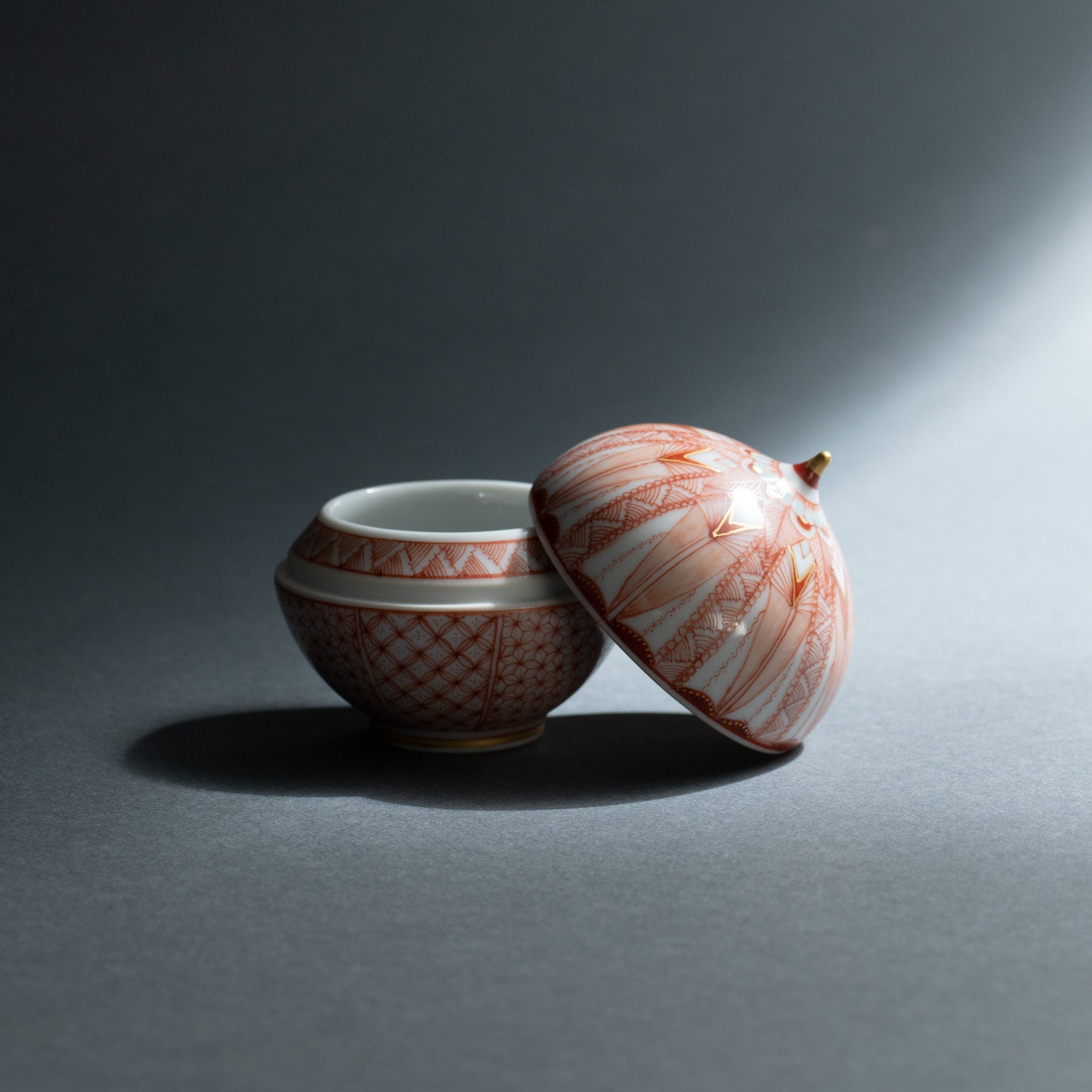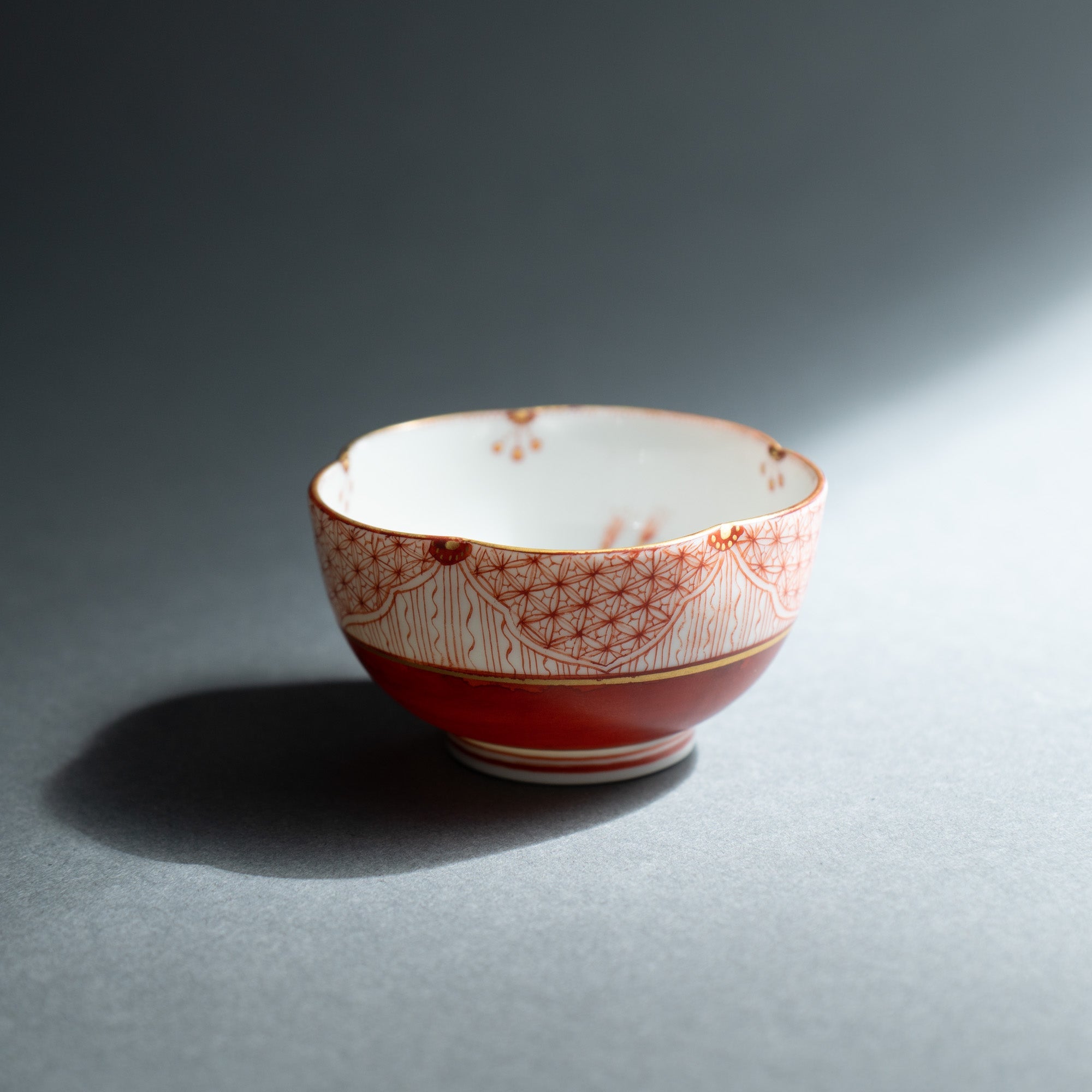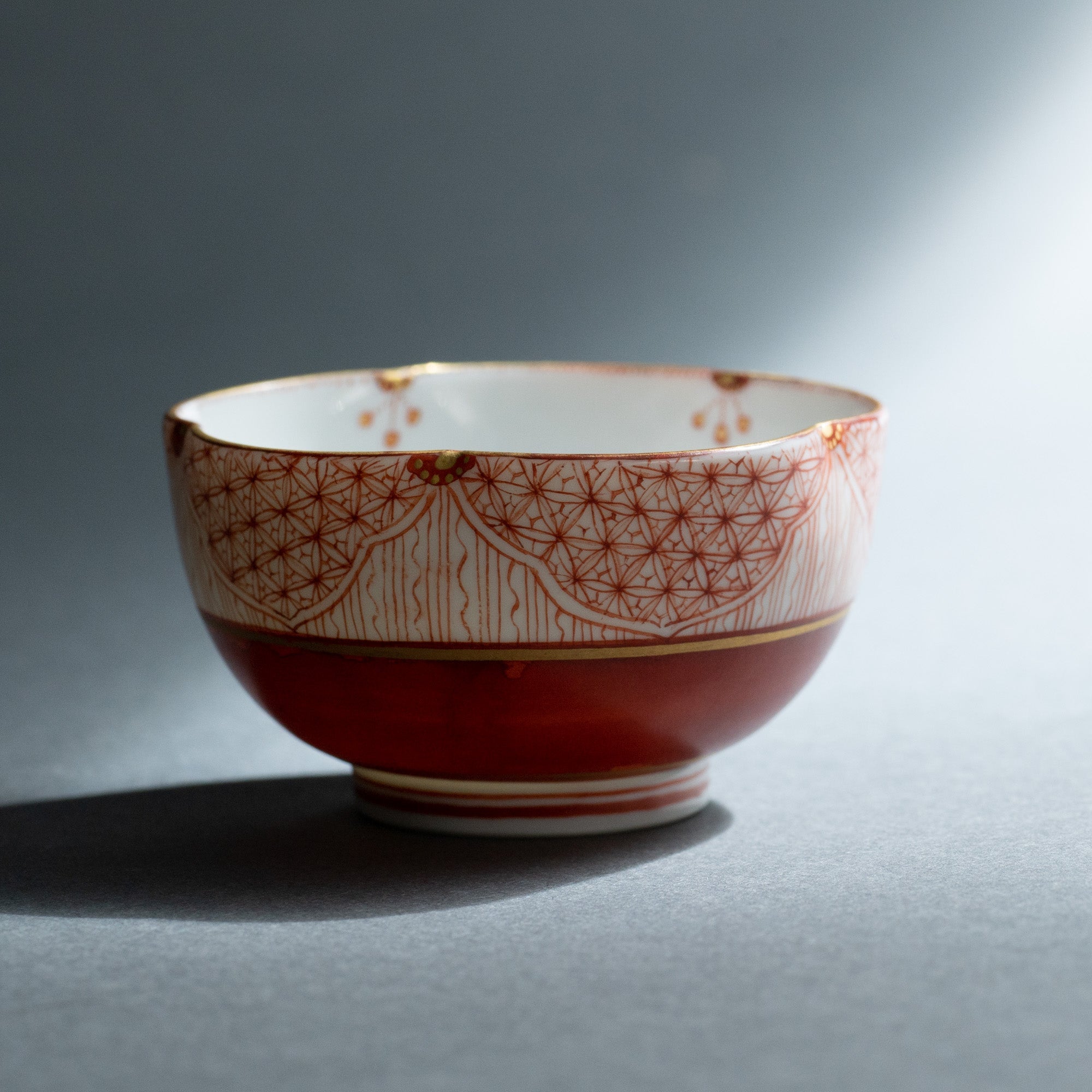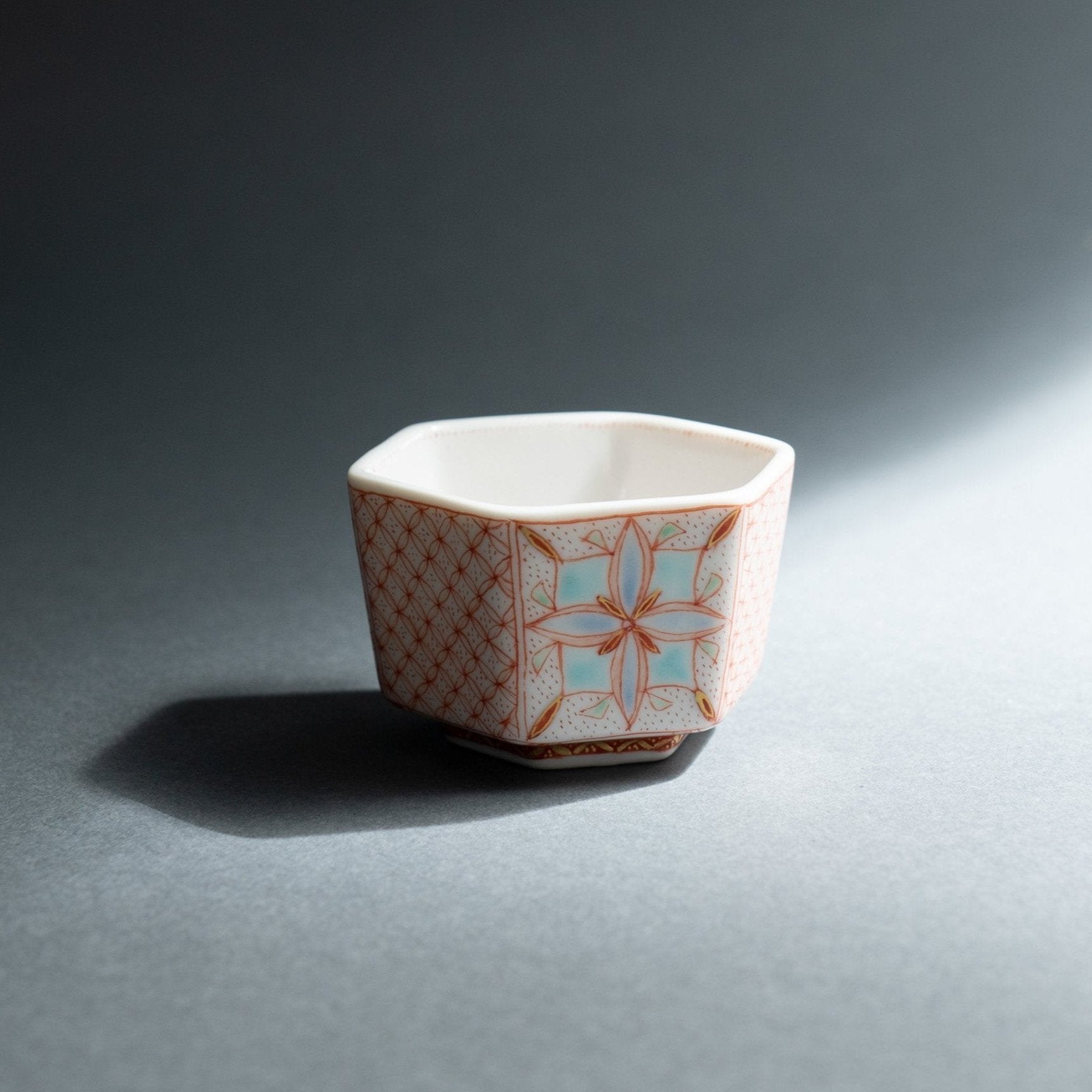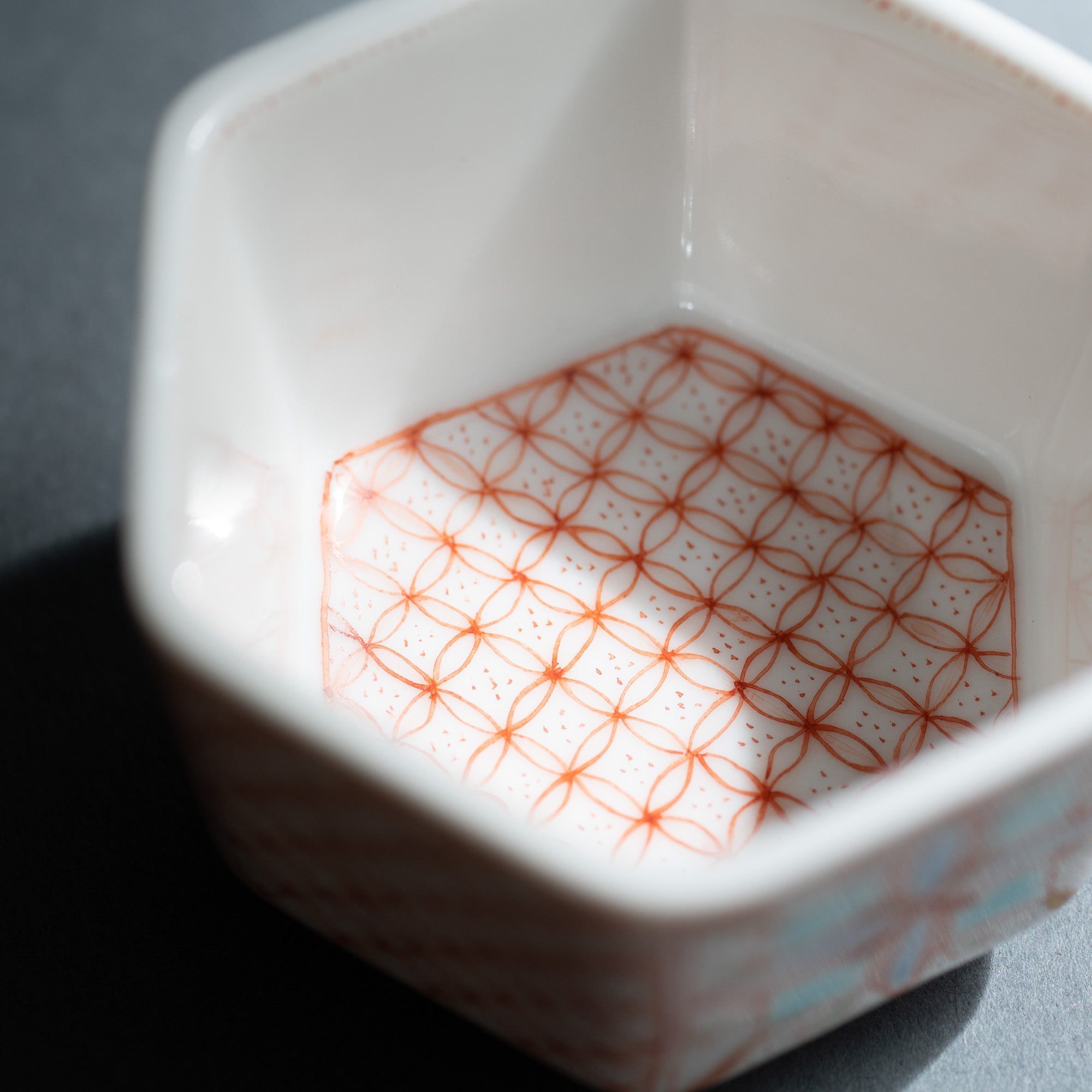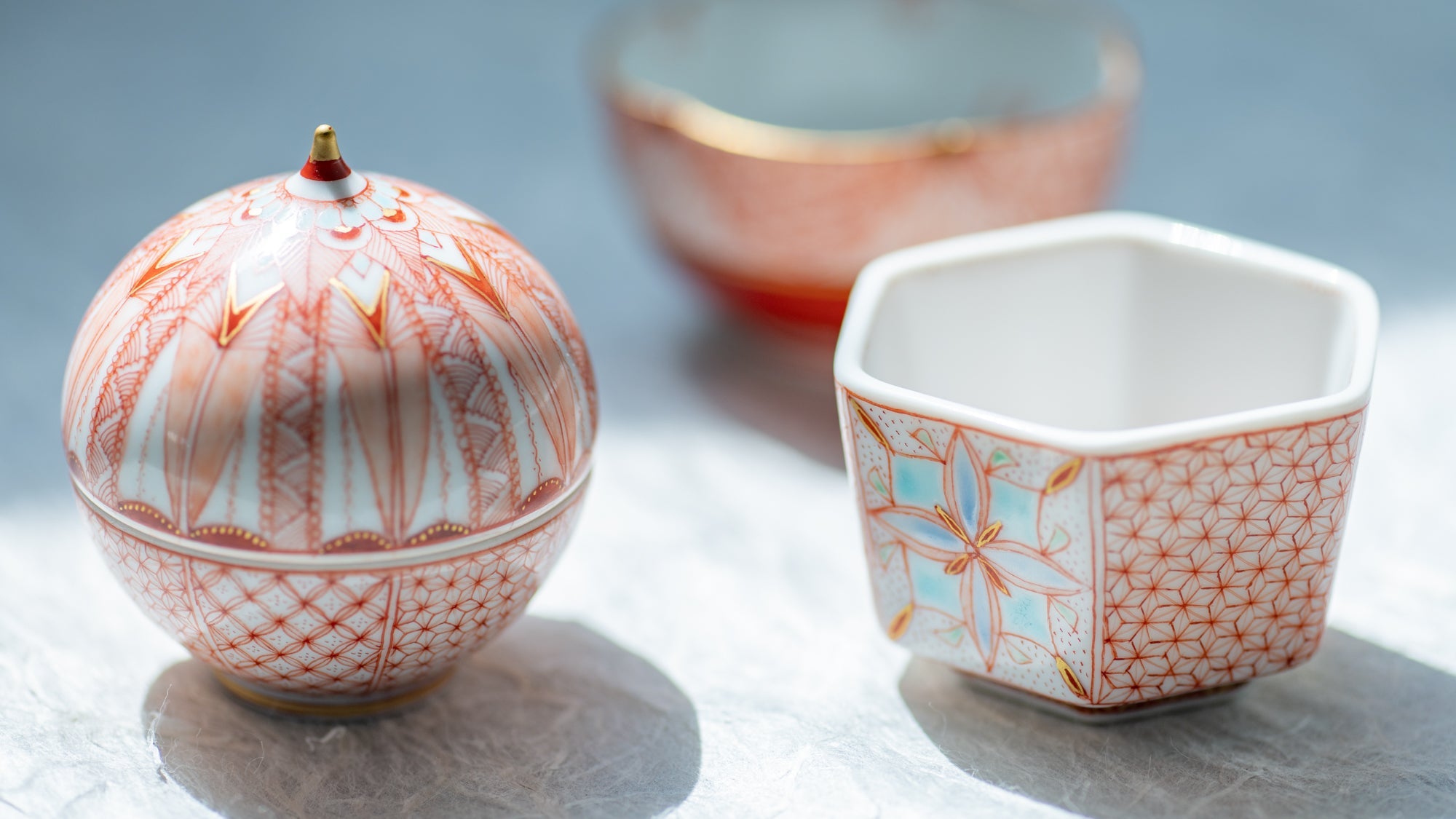
The Dance of Crimson Lines
Fukushima Reiko
Fukushima Reiko's works utilize the akae-saibyo technique, one of the most notable methods in contemporary Kutani ware. This technique employs hair-thin red lines to create intricate and beautiful patterns on porcelain. Her graceful brush strokes make each line appear to floating above the porcelain, creating a three-dimensional effect reminiscent of dancers moving in and out of shadows and forming a gradient of red shades. Each piece immerses the viewer in the beauty of traditional craftsmanship with refined patterns and designs.
The Exquisite Art of Akae-Saibyo
One of the most renowned techniques of Kutani ware, akae-saibyo, originated in the Edo period (1603 CE–1868 CE). This technique was further refined at the Miyamoto Kiln in the late Edo period.
Artisans utilize a red iron oxide pigment calledbengarato create detailed motifs, birds and flowers, landscapes and human figures. While some pieces feature gold accents, most are completed using only red.
Works crafted with the akae-saibyo technique feature uniformly thin lines, sometimes as fine as 0.1 mm (approx. 0.004 in). Through meticulous design, artisans vary line density to achieve different shades of red, giving the patterns depth and dimensionality. When depicting human figures, even the subtlest expressions of individual hair strands are vividly brought to life. In illustrations of nature such as birds, flowers and waves, the red brushstrokes convey a sense of vitality and dynamic beauty, leaving a strong visual impression and exuding a unique aura.
Continuing the Artistic Legacy
Fukushima Reiko's father, Fukushima Buzan, is a reknowned master artisan of akae-saibyo. Under his guidance and influence, Reiko embarked on her path of learning and creating akae. She believes that lines possess their own personalities; some artists draw strong, bold lines, while others create soft and gentle ones. Reiko continues to create designs that reflect her unique style, with her lines evoking a sense of softness and warmth.
Akae-saibyo, using almost a single color, can showcase a wide range of expressive effects and offer various visual experiences. Combined with the artisan’s deep understanding of this art form, each piece is imbued with vitality and distinct character. Through meticulous brushwork and exceptional skill, Reiko infuses her emotions and thoughts into her creations, making every piece an expression of art and a vessel of cultural heritage.
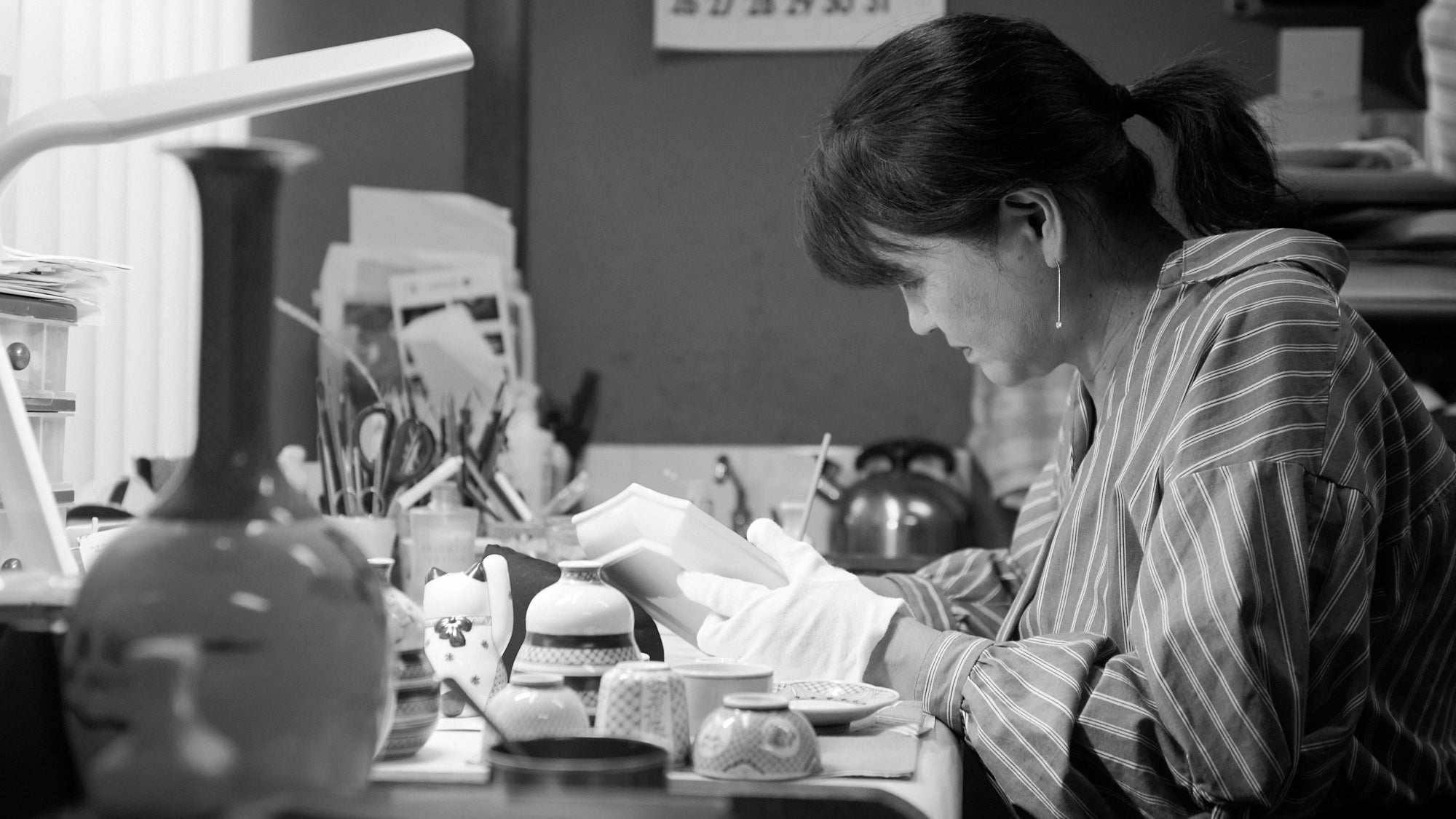
Biography
Fukushima Reiko, an artist dedicated to the akae-saibyo technique, graduated from the Ishikawa Prefectural Kutani Ceramic Technical Training Institute in 2011. She joined her father, Fukushima Buzan’s workshop and studied under his guidance. In 2012, she exhibitedAkae no Keifu, "Lineage of Akae" at the Kutani Porcelain Art Museum in Nomi City. The following year, she exhibitedAo to Aka, "Blue and Red," at the Museum of Traditional Arts and Crafts of Ishikawa Prefecture.
She was awarded at the Nomi City Art Exhibition in 2014 and in 2015. And in 2019 and 2021, she was honored with awards at the Traditional Kutani Ware Crafts Exhibition.


